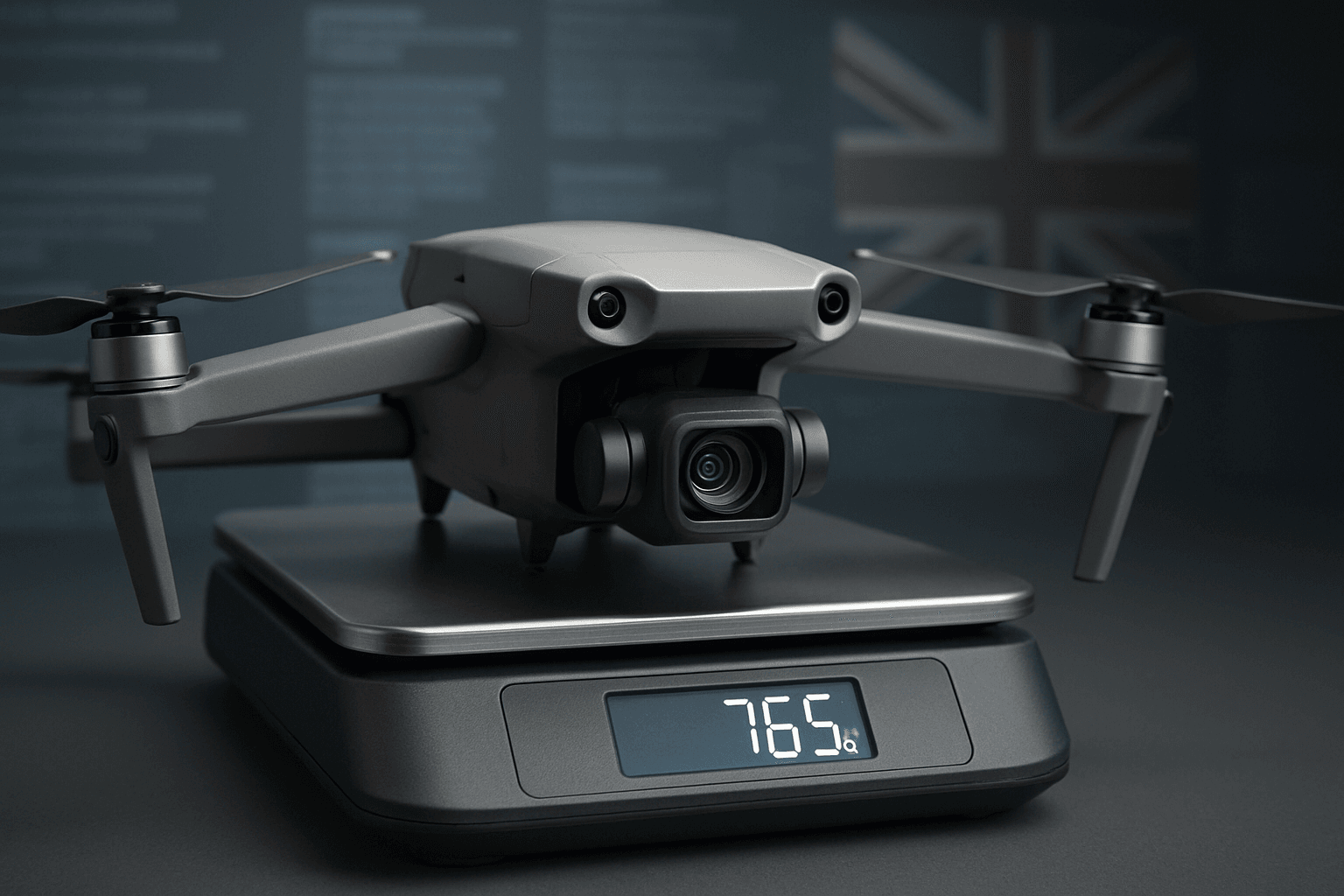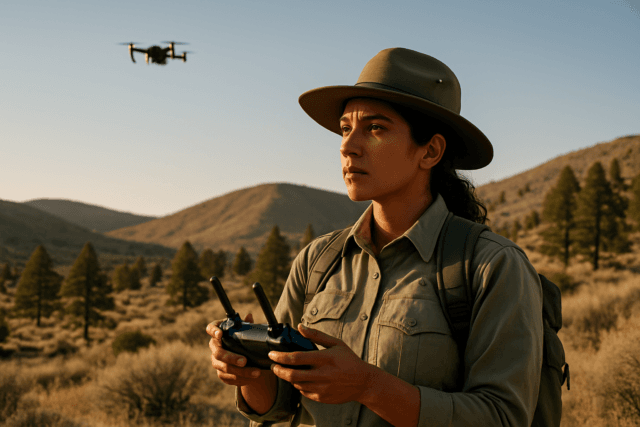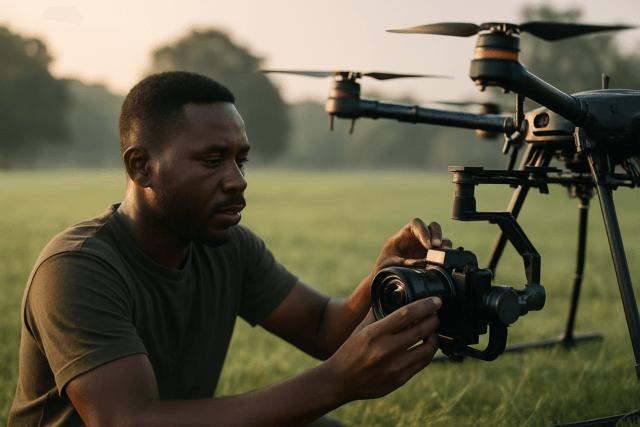As drone technology advances and becomes more accessible, understanding the regulations surrounding drone weight restrictions in the UK is crucial for both recreational and commercial users. In 2025, the Civil Aviation Authority (CAA) continues to refine and enforce these regulations to ensure public safety and the responsible integration of drones into UK airspace. This guide will provide a comprehensive overview of the current drone weight restrictions in the UK, helping you stay compliant and fly safely.
Why Drone Weight Matters: Understanding the Regulations
Drone weight is a primary factor in determining the regulations that apply to your flight. The CAA uses weight categories to assess the potential risk a drone poses to people and property in the event of an accident. Heavier drones generally require more stringent regulations due to their higher potential for causing harm.
Key Weight Categories and Their Implications
The UK drone regulations define several key weight categories, each with specific rules and requirements:
1. Drones Under 250g: The “Low-Risk” Category
- Regulations: Drones weighing less than 250g are considered to be in the “low-risk” category, offering more flexibility in terms of where you can fly.
- Flying Over People: You can fly these drones closer to people and even over them, but not over crowds.
- Registration: If the drone is classified as a toy or does not have a camera, registration is not required. However, if it is not a toy and has a camera, registration as an operator is required.
- IDs Required: A Flyer ID is not required, but an Operator ID is required if the drone has a camera and is not a toy.
2. Drones Between 250g and 500g: A2 Certificate of Competency (A2 CofC)
- Regulations: Flying a drone between 250g and 500g allows you to fly closer to people than 50m if you get an A2 Certificate of Competency (A2 CofC).
- Flying Over People: You still must not intentionally fly over people.
- Registration: Drones weighing 250g or more must be registered with the CAA.
- IDs Required: Both Flyer ID and Operator ID are required.
3. Drones Under 2kg: The A2 Subcategory
- Regulations: Drones weighing less than 2kg are authorized to be flown in the subcategories A2 and A3
- Distance From People: You are required to maintain a 50-meter distance from people.
- Certification: You are required to pass the A2 theory exam (A2 Certificate of Competency or ‘A2 CofC’).
- Registration: Drones weighing 250g or more must be registered with the CAA.
- IDs Required: Both Flyer ID and Operator ID are required.
4. Drones 2kg or Greater: The A3 Subcategory
- Regulations: Drones of MOTM (Maximum Take Off Mass) of 2kg or greater are only authorised to be flown in the A3 subcategory.
- Flying “Far From” People: This category covers more general types of unmanned aircraft operations, including model aircraft with a MTOM up to 25kg.
- Restrictions: You should not fly in or near residential, commercial, industrial, or recreational areas, and keep at least 50 meters horizontal distance from any uninvolved people. Essentially, A3 is “fly in wide open spaces only”.
- Registration: Drones weighing 250g or more must be registered with the CAA.
- IDs Required: Both Flyer ID and Operator ID are required.
5. Drones Under 25kg: Open Category
- Regulations: The aircraft’s maximum take-off mass must be less than 25kg.
- Basic Requirements: Keep the drone within Visual Line of Sight (VLOS); do not fly higher than 400 ft (120 metres) from the earth’s surface.
- Permissions: Operators needing to fly outside one or more of these conditions will be required to seek permission to fly in the Specific Category.
- Registration: Drones weighing 250g or more must be registered with the CAA.
- IDs Required: Both Flyer ID and Operator ID are required.
UK Drone Laws: A Comprehensive Guide for Safe and Legal Flying
As drone usage continues to grow in the UK, understanding the latest drone laws is essential for both recreational and commercial operators. The UK Civil Aviation Authority (CAA) has implemented a comprehensive set of regulations to ensure safe and responsible drone operations.
Mandatory Requirements for Drone Operators in 2025
- Maximum Flight Altitude: Drones must not exceed 400 feet (120 meters) above the surface to ensure separation from manned aircraft and maintains safe airspace. Fines up to £2,500 for exceeding altitude limits.
- Visual Line of Sight (VLOS): Operators must maintain a clear line of sight with the drone at all times to ensure immediate response to potential hazards and maintains control. Fines up to £2,000 for flying beyond visual line of sight.
- Restricted Airspace Compliance: Permission is required before flying in restricted airspace (e.g., near government buildings, military bases) to protects sensitive areas and ensures national security. Unauthorized flight can result in fines up to £5,000.
- Airport No-Fly Zone: No flying within a 5-kilometer (3-mile) radius of airports to protects aircraft during takeoff and landing. Fines up to £7,500 for violations.
- Distance from People: Keep at least 50 meters away from people not involved in the operation to ensures public safety and minimizes risk of injury. Fines up to £2,500 for unsafe operations.
- Distance from Built-up Areas: Drones weighing 250g or more must remain 150 meters away from residential, commercial, or industrial zones to reduces risk to property and public safety. Fines up to £3,000.
- Drone Registration & Flyer ID: Drones with a camera (unless a toy) or weighing 250g or more must be registered with the CAA to ensures accountability and operator responsibility. Fines up to £1,000 for unregistered drones.
Operational Categories for Drones in 2025
Drone flights are categorized based on the level of risk involved, influencing where and how you can fly. The three main categories are Open, Specific, and Certified.
Open Category (Low-Risk Flights)
The Open Category is designed for low-risk operations and is further divided into three subcategories: A1, A2, and A3.
- A1 (Flying Over People): Allowed for drones under 250g.
- A2 (Flying Close to People): Requires a C2 drone or a ‘legacy’ drone and an A2 Certificate of Competency.
- A3 (Flying Far from People): For drones up to 25kg, only in remote areas.
Specific Category (Medium-Risk Flights)
The Specific Category covers more complex operations that fall outside the boundaries of the Open Category. It requires a General Visual Line of Sight Certificate (GVC) and CAA Operational Authorization. This category is used for professional inspections, surveys, and beyond-line-of-sight operations.
Certified Category (High-Risk Flights)
The Certified Category is for very complex operations that present an equivalent risk to manned aviation. It includes drones carrying passengers or hazardous goods and requires full pilot licensing and aircraft certification. UK regulations for the Certified Category are still being developed.
Upcoming Drone Classifications (2026 Update)
Starting January 1, 2026, all new drones must meet product classifications C0 to C4, which will affect operational permissions.
| Class | Weight & Limitations | Permissions |
|---|---|---|
| C0 | < 250 g, max 120 m altitude | No restrictions except not over crowds. |
| C1 | < 900 g, limited energy impact | Allowed in A1 category. |
| C2 | < 4 kg, must use low-speed mode | Allowed in A2 category with certificate. |
| C3 & C4 | Up to 25 kg, standard operations | Allowed in A3 category. |
Key Considerations for Different Drone Weights
Lightweight Drones (<250g)
- Advantages: More flexible flying locations, fewer restrictions on flying near people.
- Requirements: Operator ID is still required if the drone has a camera.
- Cautions: Reckless flying can still result in penalties.
Heavier Drones (250g and Above)
- Advantages: Can handle more challenging conditions, often equipped with advanced features.
- Requirements: Registration with the CAA, Flyer ID, Operator ID, and adherence to distance restrictions from people and built-up areas.
Registration and Identification Requirements
Who Needs to Register?
In the UK, if you own or are responsible for a drone or model aircraft weighing 250g or more, or any drone with a camera (unless it’s a toy), you must register with the CAA before flying outdoors.
Flyer ID
Anyone operating a drone in UK skies must have a Flyer ID. This applies to both recreational and commercial drone pilots. You must pass the CAA’s official theory test to get a flyer ID before flying a drone or model aircraft covered by the regulations.
Operator ID
In addition to a Flyer ID, drone operators need an Operator ID which demonstrate understanding of the rules. The operator is the person responsible for managing a drone or model aircraft. This means they’re responsible for things like maintaining it and making sure that anyone who flies it has a flyer ID. You must be 18 or over to get an operator ID.
Displaying Your Operator ID
When labelling drones, ensure the Operator ID is:
- Visible from the outside, or within a compartment that can easily be accessed without using a tool
- Clear and in block capitals taller than 3mm
- Secure and safe from damage
- On the main body of the aircraft
Remote ID
As of May 2025, the CAA announced that it will be mandatory for all drones over 100 grams with a camera to have a Remote ID from 2026 onwards. Drones bought after January 1, 2026, with a UK1 label, for example, will need to have an active direct remote ID. By January 1, 2028, all drones are required to have direct remote ID.
UK Class Markings
The UK is introducing its own class markings for drones, replacing the current European markings of C1, C2, C3, etc., with UK1, UK2, UK3, and so on.
Resources for Drone Pilots
- CAA Website: The official source for all drone regulations and updates.
- Drone and Model Aircraft Registration and Education Service (DMARES): For registering as a drone operator and obtaining your Flyer ID.
- CAA-Approved Training Schools: For A2 CofC and GVC training.
Staying Updated
Drone regulations are subject to change, so it’s essential to stay informed about the latest updates from the CAA. Regularly check the CAA website and subscribe to industry newsletters to ensure you’re always flying legally and safely.
Navigating the UK drone laws in 2025 requires understanding the specific requirements for registration, operational categories, and compliance with airspace restrictions. By adhering to these laws, drone operators can ensure they fly safely and legally. For the most up-to-date information, refer to the CAA’s resources and stay informed about any regulatory changes.





